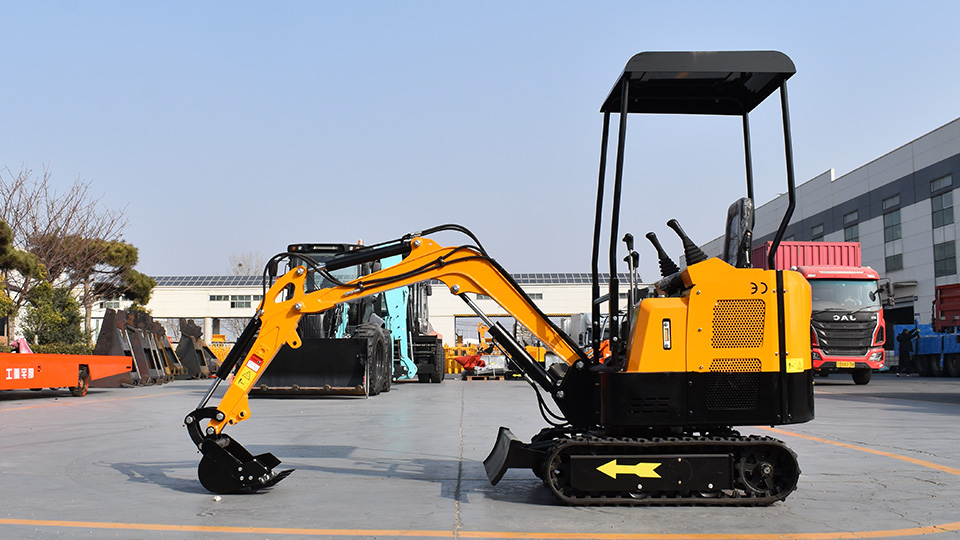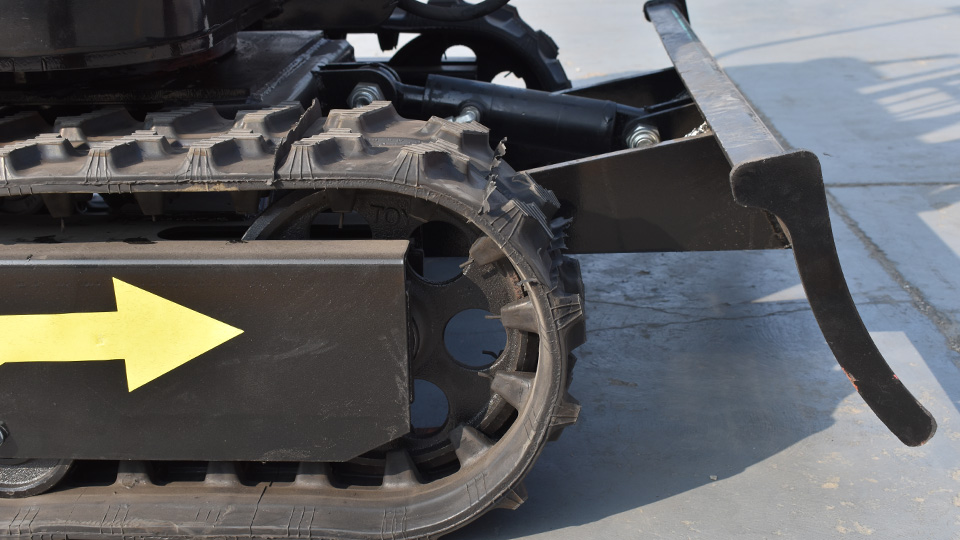The construction industry is on the brink of a technological revolution, and excavators are at the forefront of this transformation. Modern excavators are becoming smarter, more efficient, and increasingly eco-friendly. This article explores the latest trends and innovations in excavator technology, highlighting how these advancements are shaping the future of construction.
1. Automation and AI Integration
One of the most significant trends in excavator technology is the integration of artificial intelligence (AI) and automation. AI-driven excavators are equipped with machine learning algorithms that analyze terrain conditions, optimize digging patterns, and reduce fuel consumption. These advancements significantly improve project timelines while minimizing human errors.
Autonomous and semi-autonomous excavators are becoming more prevalent, especially in hazardous environments. These machines utilize advanced sensors, LiDAR, and GPS technology to navigate worksites and perform excavation tasks with minimal human intervention. As automation continues to evolve, mini excavator manufacturers are also integrating AI capabilities into compact models, making them more adaptable for urban and small-scale projects.
2. IoT and Smart Excavators
The Internet of Things (IoT) is revolutionizing excavator operations by providing real-time data insights that improve efficiency and reduce downtime. Excavator manufacturers are embedding IoT sensors and telematics systems into their machines, allowing construction companies to track fuel usage, engine performance, hydraulic pressure, and other critical metrics remotely. This connected technology enhances decision-making by providing predictive maintenance alerts, reducing unexpected breakdowns and costly repairs.
For excavator bucket manufacturers and excavator parts manufacturers, IoT-enabled equipment is opening new opportunities for smarter, more durable components. Intelligent attachments equipped with sensors can provide data on wear and tear, ensuring timely replacements and improving overall machine performance.

3. Sustainability and Eco-Friendly Practices
Environmental concerns are driving the development of eco-friendly construction equipment. Manufacturers are investing in electric and hybrid models to reduce emissions and promote sustainable practices in the construction industry. Electric excavators, in particular, are gaining popularity due to their ability to operate in noise-sensitive areas, such as residential neighborhoods and indoor job sites, without compromising on power or performance.
Recycling and sustainable parts manufacturing are also becoming more prevalent. Excavator parts manufacturers are prioritizing recyclable materials and developing longer-lasting parts to minimize waste. High-durability components, made from advanced alloys and reinforced polymers, ensure that excavators remain in service for longer periods, reducing the need for frequent replacements.
4. Customization and Specialization in Excavator Buckets
The demand for specialized excavation equipment is prompting excavator bucket manufacturers to develop more advanced and application-specific attachments. Traditional one-size-fits-all buckets are being replaced with purpose-built solutions designed for tasks such as rock excavation, trenching, grading, and material handling. These specialized buckets enhance efficiency, allowing construction professionals to achieve better precision and productivity in challenging conditions.
Durability is another critical focus in bucket innovation. Manufacturers are now utilizing high-strength, wear-resistant materials like reinforced steel alloys and composite coatings to extend the lifespan of excavator buckets. These advancements help reduce maintenance costs and downtime, making them a preferred choice for construction companies operating in demanding environments.
5. Growth in Mini Excavators Demand
The global trend toward urbanization is driving a surge in demand for compact construction equipment, making mini excavator manufacturers a key player in the excavation industry. Mini excavators offer a practical solution for working in tight spaces where full-sized machines cannot operate efficiently, such as urban construction sites, residential developments, and utility installations.
Modern mini excavators now feature advanced telematics, smart controls, and enhanced stability, making them more efficient and user-friendly for operators. For excavator bucket manufacturers and excavator parts manufacturers, this growth has led to the development of high-performance attachments specifically designed for mini excavators. Heavy-duty digging buckets, grading buckets, and trenching tools are now being engineered to handle demanding tasks while maintaining the lightweight nature of compact excavators.
6. Enhanced Focus on Operator Safety and Comfort
Excavator manufacturers are prioritizing operator well-being by enhancing cabin ergonomics and reducing fatigue. The latest excavator models feature redesigned operator stations with improved seating, intuitive controls, and reduced vibration levels to ensure long hours of comfortable operation. Advanced suspension seats with lumbar support, climate-controlled cabins, and adjustable armrests are now standard in many excavator models.
Safety features such as 360-degree cameras, collision detection systems, and enhanced LED lighting are becoming more prevalent. These technologies improve situational awareness, prevent accidents, and enhance visibility in low-light conditions, ensuring safer operation during night shifts and underground projects.
7. Global Supply Chain and Manufacturing Trends
Excavator parts manufacturers are taking proactive measures to enhance supply chain resilience. Recent challenges, such as raw material shortages and logistical delays, have pushed manufacturers to rethink their sourcing and production strategies. Many are now shifting toward localized production to reduce dependency on international suppliers and ensure a steady supply of critical components.
Regional manufacturing hubs are becoming essential for meeting localized market needs. The Asia-Pacific region remains a dominant force in excavator production, with China, Japan, and South Korea leading in technological advancements and cost-effective manufacturing. Meanwhile, North America and Europe are strengthening their manufacturing capabilities to reduce reliance on imports and improve service response times.

8. Challenges and Opportunities for 2025
Rising material costs and stricter environmental and safety regulations are presenting significant challenges for excavator manufacturers. Steel, aluminum, and other essential metals used in heavy equipment production have experienced price fluctuations due to supply chain disruptions and increasing demand. To counteract these cost increases, manufacturers are investing in alternative materials and advanced manufacturing techniques.
Stricter environmental and safety regulations are reshaping the way excavator manufacturers design and produce equipment. Governments worldwide are enforcing tougher emissions standards, requiring manufacturers to develop cleaner, more fuel-efficient machines. This shift is driving the growth of electric and hybrid excavators, particularly among mini excavator manufacturers.
Conclusion
The future of excavators is bright, driven by advancements in automation, IoT, sustainability, and operator safety. As manufacturers continue to innovate and adapt to changing market demands, the construction industry will benefit from smarter, more efficient, and eco-friendly excavation solutions. By embracing these trends and innovations, construction professionals will have the tools they need to work smarter, safer, and more sustainably
Post time:Sep-25-2020
